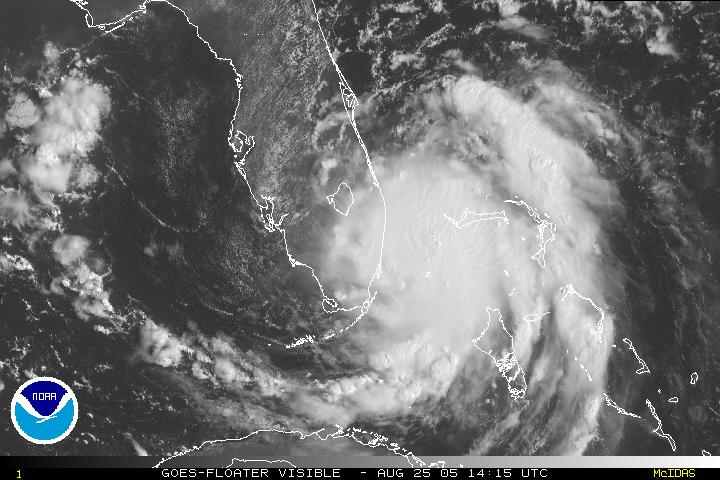
Figure 1. GOES-East Visible image valide 1415 UTC August 25
| Rob Rogers | LPS |
| John Gamache | Workstation |
| Brad Smull (UWash) | Radar |
| Mike Silah, Tom Strong, Mark Nelson | Pilots |
| Joe Kippel | Flight Engineer |
| Pete Siegel | Navigator |
| Barry Damiano | Flight Director |
| Terry Lynch, Damon San Souci, Bill Olney | Engineers |
This was an NHC-tasked combination SFMR/Fix mission into Tropical Storm Katrina. The plan called for the NOAA P3 to leave MacDill AFB,FL at 09:30 AM EDT and arrive at the IP point 80 nm north of the center, then do one figure-4, rotate 45 degrees to a point southwest of the center, and perform the next figure-4. Then move to the east side of the storm, pass toward northwest from east to the north of the storm. During this downwind leg there will be a coordination with the NRL P-3 to test the ability to guide the NRL using NOAA LF radar. Drop 8-10 drops at the turn points and the center for NHC, then a drop on each downwind leg for AOC comparisons with the SFMR. Fly at 5000 ft. and recover at MacDill AFB, FL at 6:00 PM EDT.
Mission Summary :
Takeoff was at 1310 UTC. The storm became much better organized while N43RF was in it. Visible satellite imagery at 1415 UTC (Fig. 1) showed two large rainbands developing, one oriented around the north and east side of the storm and another wrapping around the south and west side of the storm. There was a gap between the core cloudiness and the east rainband. This band was being considered as a possible coordination target for the NRL P-3, though it likely would have been too far from the center to be of interest. The visible image appeared to show convective elements in the downwind portion of the band and more stratiform elements in the upwind portion.
Maximum flight-level winds during the mission reached 75-80 kt on the east side, while maximum surface winds from the SFMR were about 65 kt. The minimum sea-level pressure dropped to 985 hPa from a GPS sonde. The radar presentation also improved significantly while the aircraft was in the storm. At 1706 UTC (Fig. 2a) there was a region of deep convection on the south side of the circulation center. North-south oriented bands were also evident on the east and south side of the storm. By 1924 UTC (Fig. 2b) a clear eye had formed on the radar image, as convection had nearly encircled the center. The storm was just offshore Fort Lauderdale at this time. Because of observations from N43RF, plus Doppler winds from the ground radar, NHC upgraded Katrina to a hurricane. N43RF landed at 2115 UTC back at Macdill AFB.

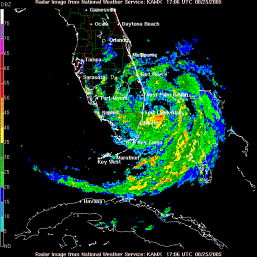
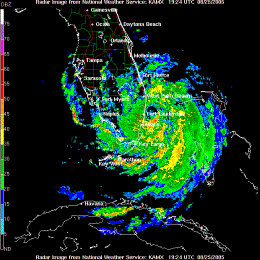
(b)
Figure 2. WSR-88D image of radar reflectivity (dBZ) from MIA valid (a) 1706 UTC and
(b) 1924 UTC August 25.
Problems :
The NOAA mission proceeded fine. All instruments performed well, except for some occasional communications problems between the AVAPS and HAPS data systems for dropsonde processing. There was also a high dropsonde failure rate (50%). The SMFRs performed well, as did the radars and the cloud physics probes. We were able to access the RAMSDIS server and upload satellite loops to the aircraft, and we were also able to process and transmit dual-Doppler radar analysis products off the aircraft in near real- time. The coordination with the NRL P-3 did not occur, however, because of maintenance issues with the NRL P-3.
Robert Rogers
9/1/05
Flight Data | ||
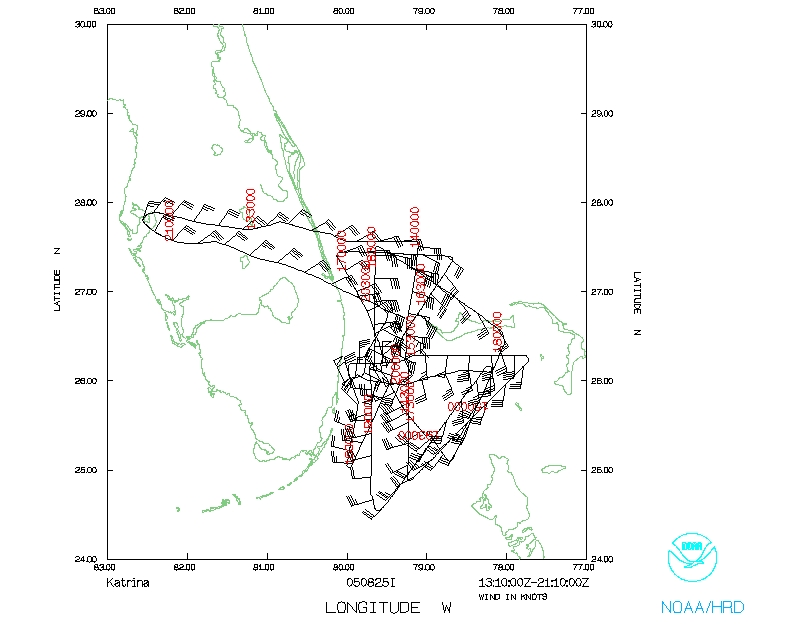 Flight track |
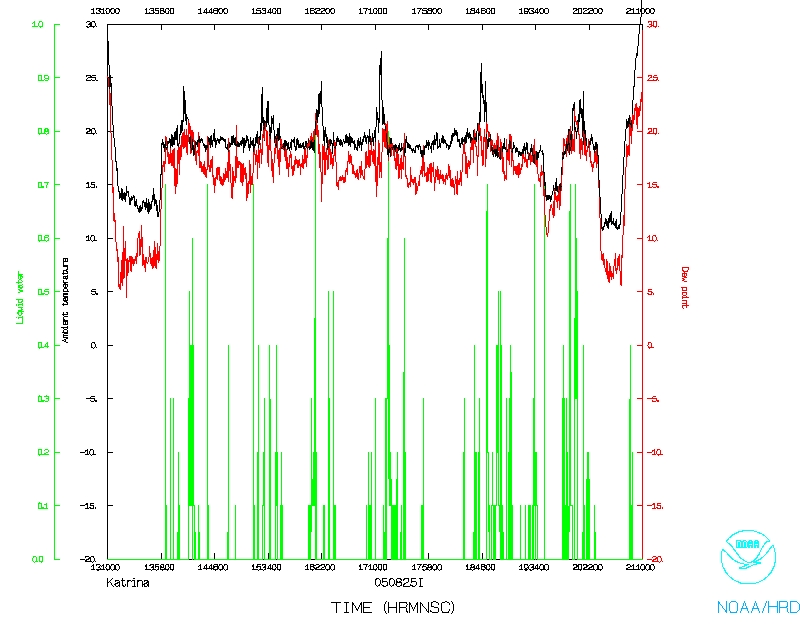 Temperature and Moisture |
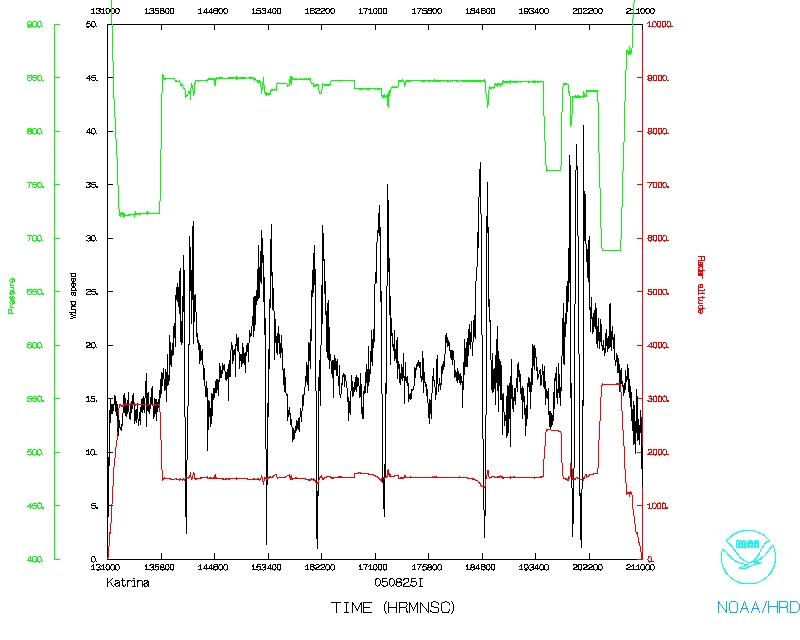 Wind and Atlitude |
Page last updated October 7, 2005
Return to Mission page.